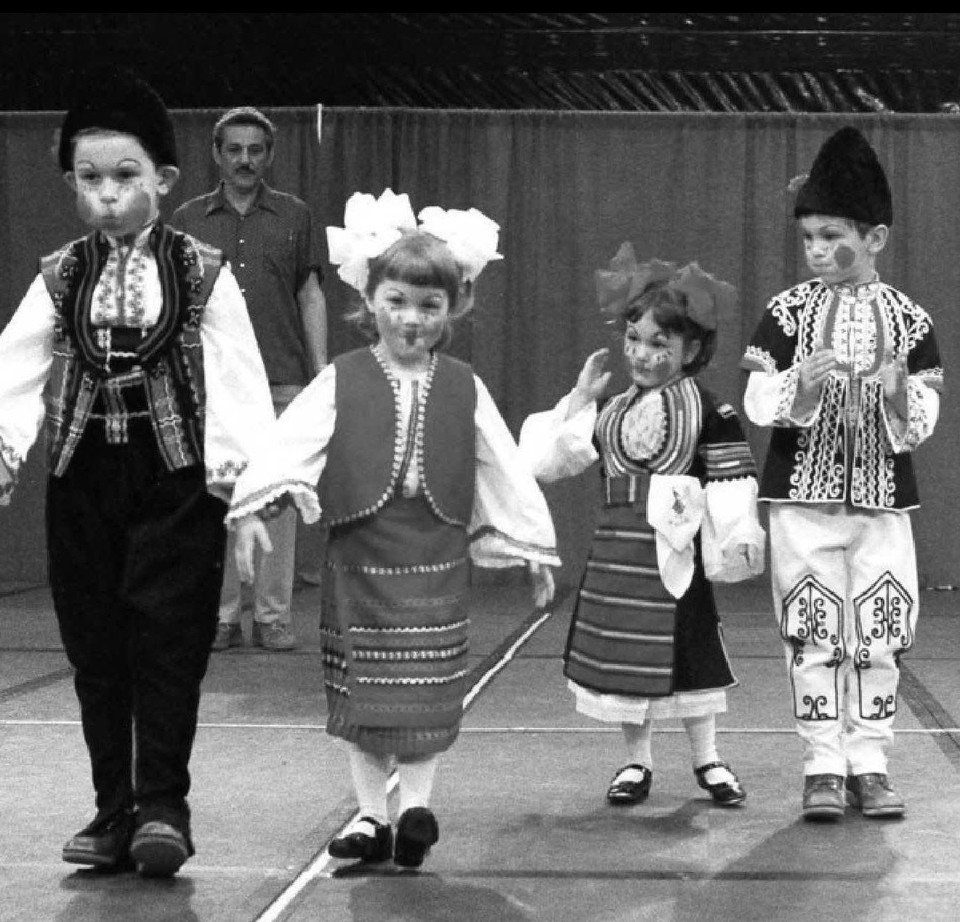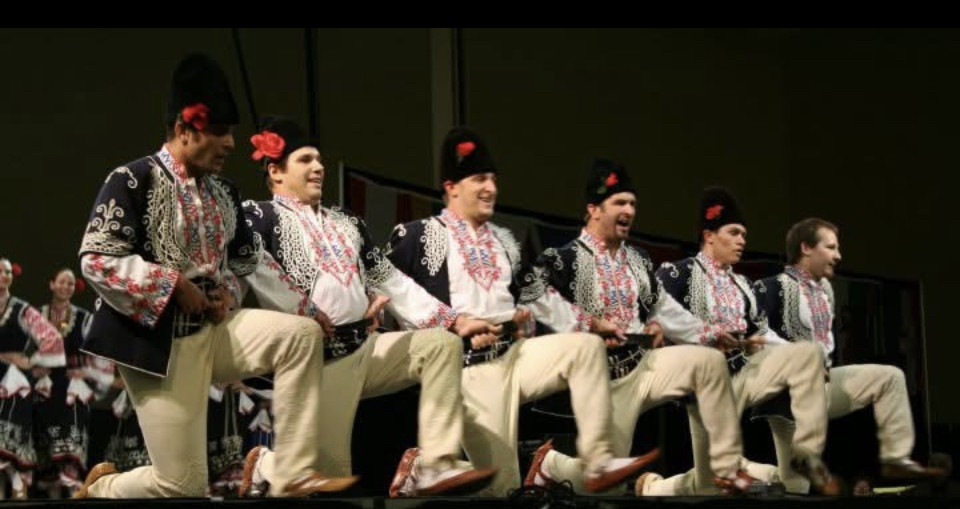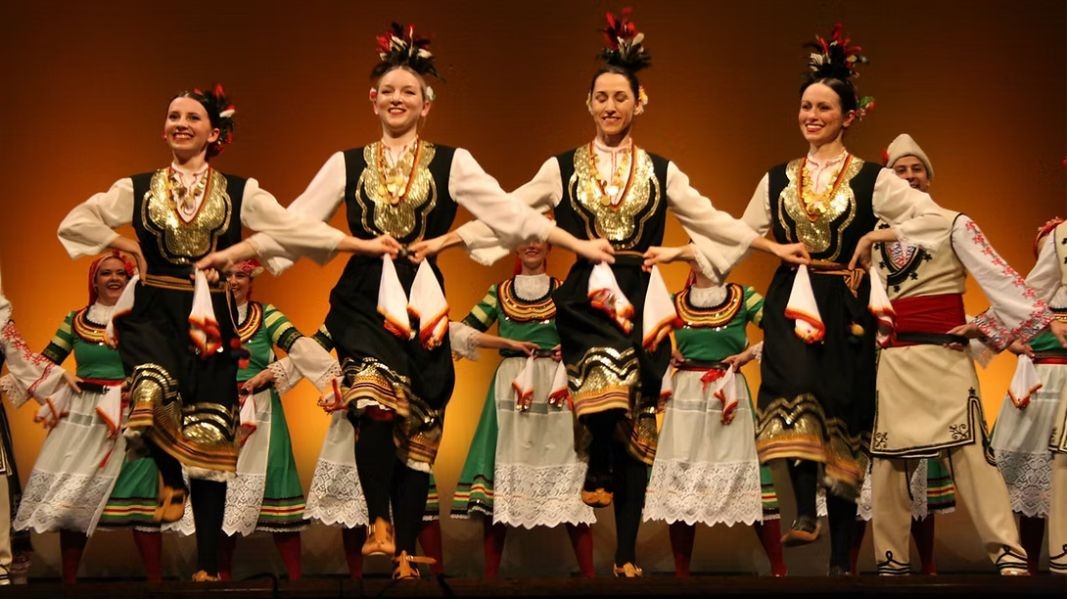 3
3
Back home again after 30 years! This is exactly what is happening to the oldest Bulgarian folk ensemble in North America. Affiliated with the Bulgarian-Macedonian National, Educational, and Cultural Center (BMNECC) in Pittsburgh, Pennsylvania, the Otets Paissii Performing Folk Ensemble is celebrating its 70th anniversary with a tour of Bulgaria from 16 to 22 June, featuring three special concerts in Blagoevgrad, Sofia, and Nessebar.
"The troupe is the heart of the oldest and most active Bulgarian centre in Pennsylvania, which was founded 95 years ago," said Bilyana Stafura, the ensemble's artistic director for the past two decades, in an interview with Radio Bulgaria. She shares with us the history of the ensemble, taking us back to the year 1955.

The ensemble was founded by Nicholas Jordanoff, the son of Bulgarian immigrants who settled in the Pittsburgh area. A person of artistic talent and great pride in his Bulgarian heritage, he established the Otets Paisii performing folk ensemble with the aim of uniting, preserving and promoting Bulgarian folk traditions and dances, and providing a place where Bulgarians could come together and continue to act as ambassadors of Bulgaria abroad.
Bilyana believes that the ensemble's longevity is due to its members' perseverance, hard work and love for Bulgarian folklore. These are the qualities she looks for in everyone involved with the Otets Paisii Ensemble, whether they are organisers, choreographers or artists.
"The other reason, of course, is having an incredible leader and choreographer like Bibi," adds Ekaterina Kletter, who has been part of the ensemble for nine years. She discovered the troupe while taking her children to the 'Otets Paisii' Bulgarian Sunday school, which is located in the BMNECC building. As a Bulgarian mother, Katya taught her children to read and write in Bulgarian. However, she admits with a smile that it was her children who introduced her to the rhythm of their homeland.

“In recent years, the troupe has grown significantly. Regardless of a person’s initial ability to dance, what matters most is having the heart for it — the desire to show up — and they are welcomed. No matter where they come from or whether they’re Bulgarian, they are accepted among us. We’re all united by a common cause that brings us together every Sunday," Katya tells us.
The ensemble currently numbers about 60 members, but 90 people took part in the national tour to Bulgaria.

"Holding your child's hand on stage is an incredible feeling. Sixty per cent of the participants are not Bulgarian. They have no Bulgarian roots. Twenty per cent are people like me and Katya: we were born in Bulgaria, grew up here and later left to study and work in the US. The remaining 20% are second- and third-generation Bulgarians — our children, who were born there," admits Bilyana Stafura.
Among the non-Bulgarian attendees enjoying Bulgarian songs and dances on Sunday was the ensemble's longest-standing member, Pastor Dave Urban.

"The ensemble is practically in my backyard — just five minutes from where I grew up. I knew about it through friends and relatives who were in the group, and I eventually joined too," Pastor Dave Urban says. "Much of the music I grew up with—Serbian, Macedonian—is part of me and my family, and Bulgaria is part of that shared culture. We cross borders and share these cultures, creating a cultural mix. This is my third visit to Bulgaria. It's peaceful here. People sit down and enjoy each other's company, the world around them, the music and the culture."

We ask Beth what her favourite folk region of Bulgaria is.
"Oh, favourite region — definitely Pirin and the Rhodopes. They're just so beautiful and soulful!"

In contrast, Pastor David Urban admits: "There's no escaping the Shopski dances — Severnyashka and Shopska are my two favourite regions."
"The fact that Bulgarian musical folklore is incredibly rich in various time signatures — complex simple metres, asymmetrical ones and combined rhythms — makes it truly unique," says the ensemble's artistic director, Bilyana Stafura. "Pittsburgh is a very interesting place because there are many Eastern European groups, including children's and youth ensembles. We offer these groups the opportunity to grow as artists and individuals, and to feel good because the Bulgarian horo is inclusive — it draws people in."

The ensemble attracts people and gives them the chance to connect with their own roots — or with Bulgarian roots, if they are Bulgarian. We see this with our friends from Slovakia, Ukraine, Serbia and other countries. Foreigners are most impressed by how musicians can create such melodic music with such a variety of complex metres and how Bulgarians have found a way to dance to it, like the kopanitsa for example. That amazes them."
Bilyana explains that the Otets Paisii ensemble's repertoire includes songs and dances from all of Bulgaria's ethnographic regions. "We nurture a love for Bulgaria and all its beauty, and it’s incredible for us to be able to share all this with our children and friends today."
The Pittsburgh ensemble has also had the opportunity to meet some of Bulgaria's best dance and music folklore ensembles, such as 'Filip Koutev', 'Trakia', and 'Pirin'. This exchange began at BNR with the musicians from the Bulgarian National Radio Folk Music Orchestra," she says.
"These are people who really love Bulgarian folk music, and perhaps that is the most important thing. They see us as friends, which is why there's a sparkle in their eyes," says Dimitar Hristov, chief conductor of the Bulgarian National Radio Folk Orchestra. "YouTube is what connects us at the moment. I know that every one of our concerts is watched by these people and it makes them very happy. I'm glad they came to visit us. What was important was that we shared our experience and told them about Bulgarian National Radio and how our orchestra was founded 72 years ago. We showed them one of our rehearsals, which they found extremely interesting. It was a very nice meeting, very warm and cozy!"
Further reading:
On June 16, a Bulgarian scientific expedition that has been in preparation for a decade will set off for Central Asia, writes 24chasa.bg. For two weeks, ancient petroglyphs and the lifestyle of the last surviving true shamans in the Mongolian part of..
The National Ethnographic Museum at the Bulgarian Academy of Sciences presents its new exhibition "Starry Sky – Mythology and Science" , which covers knowledge of Space from antiquity to the present day and examines mythology, ancient beliefs and the..
The branch of the "Angel Kanchev" University of Ruse in Razgrad carries out joint scientific projects, participates in various forums and exchange of students and lecturers with higher education institutions in Bulgaria and abroad,..
A retaining wall alongside the Banshtitsa River in Kyustendil is being transformed into the country’s longest legal graffiti art wall, according to a..
On June 21 and 22, the Expo Center "Flora" in the Sea Garden in Burgas will turn into a culinary arena , where the best paella masters from all over..
As we approach the height of summer and temperatures soar, access to water becomes essential. We remember the hardships of summer 2024, when hundreds of..

+359 2 9336 661
